Discover the impressive and iconic Bears’ Cave in northwestern Romania, uncovered in September 1975. This geological marvel boasts three galleries, including the enchanting Candles Hall and the historic Emil Racovita Hall. A highlight is the Bones Hall, where you can marvel at the full skeleton of a cave bear.
This guide will walk you through the captivating chambers of Bear’s Cave, offering a unique glimpse into a world where history and natural beauty intertwine.

In my opinion, Romania is one of the most beautiful destinations in the world. While it’s less popular than other destinations in Western Europe, like Spain or France, I think it’s only a matter of time until tourism explodes here.
Why do I think that?
Because Romania offers so much: medieval towns like Sighisoara or Brasov, untouched rural areas, the Carpathian Mountains, the Danube Delta, The Black Sea, castles and fortresses, caves, and lakes.
And so many other attractions!
But I won’t go into more details; that’s for another time.
This time, I want to introduce you to one of the coolest hidden gems in Romania: Bears’ Cave.
Skip Ahead To My Advice Here!
Bears’ Cave Location

Bears’ Cave is located in Chișcău, a village in the northwest of Romania, at an altitude of 482m.
The closest city is Oradea, my hometown. I spent my first 18 years of life in Oradea, and I visited the Bears’ Cave countless times because it’s so unique and fascinating.
Bears’ Cave, discovered in 1975, is about a one-and-a-half-hour drive from Oradea on the DN76/E79 roads, located in the western Apuseni Mountains.
The other city that’s close by is Cluj Napoca. However, Bears’ Cave is about a 3-hour drive from Cluj Napoca on the DN1/E60 roads.
How To Get To Bears’ Cave
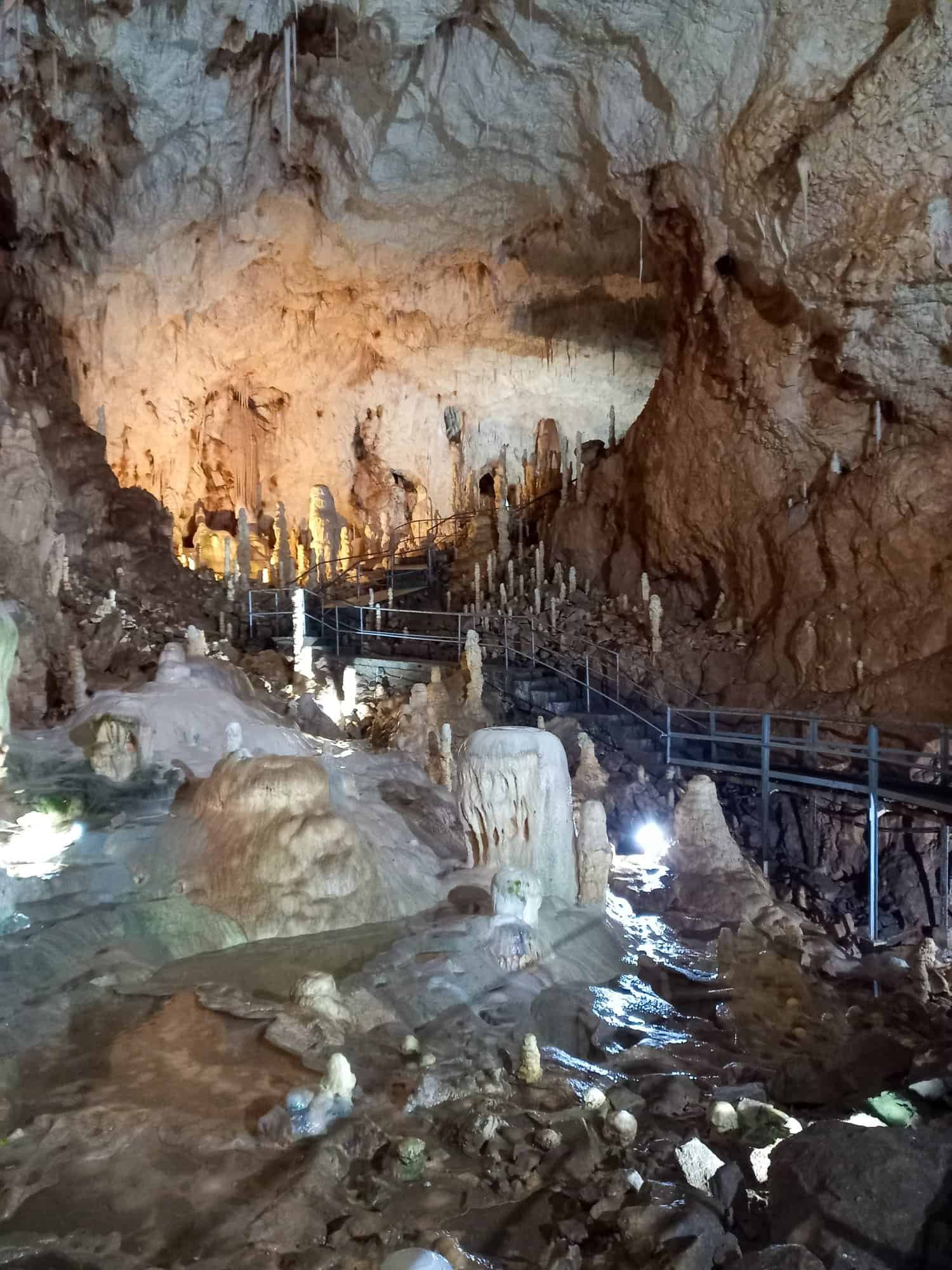
The easiest way to get to the Bears’ Cave is by car. There’s a large parking lot at the Bears’ Cave. I highly recommend you rent a car if you visit Romania.
That’s because the most interesting attractions are not in Bucharest but are spread out across the country. Also, Romanian public transportation is not very reliable, so having your own car is your best bet.
Since Oradea is the closest city to Bears’ Cave, you can choose to either fly here from Bucharest and then drive to Bears’ Cave or start the drive in Bucharest and go on a road trip across Romania.
If you decide to fly to Bihor, TAROM, the Romanian airline, operates 2-4 daily flights between Bucharest and Oradea, so it’s very easy to get to the iconic Bears’ Cave. If you choose to drive, Oradea will probably be the last stop of your road trip since it’s located on the opposite side of the country.
Brands We Use And Trust
Hours And Entry Fee
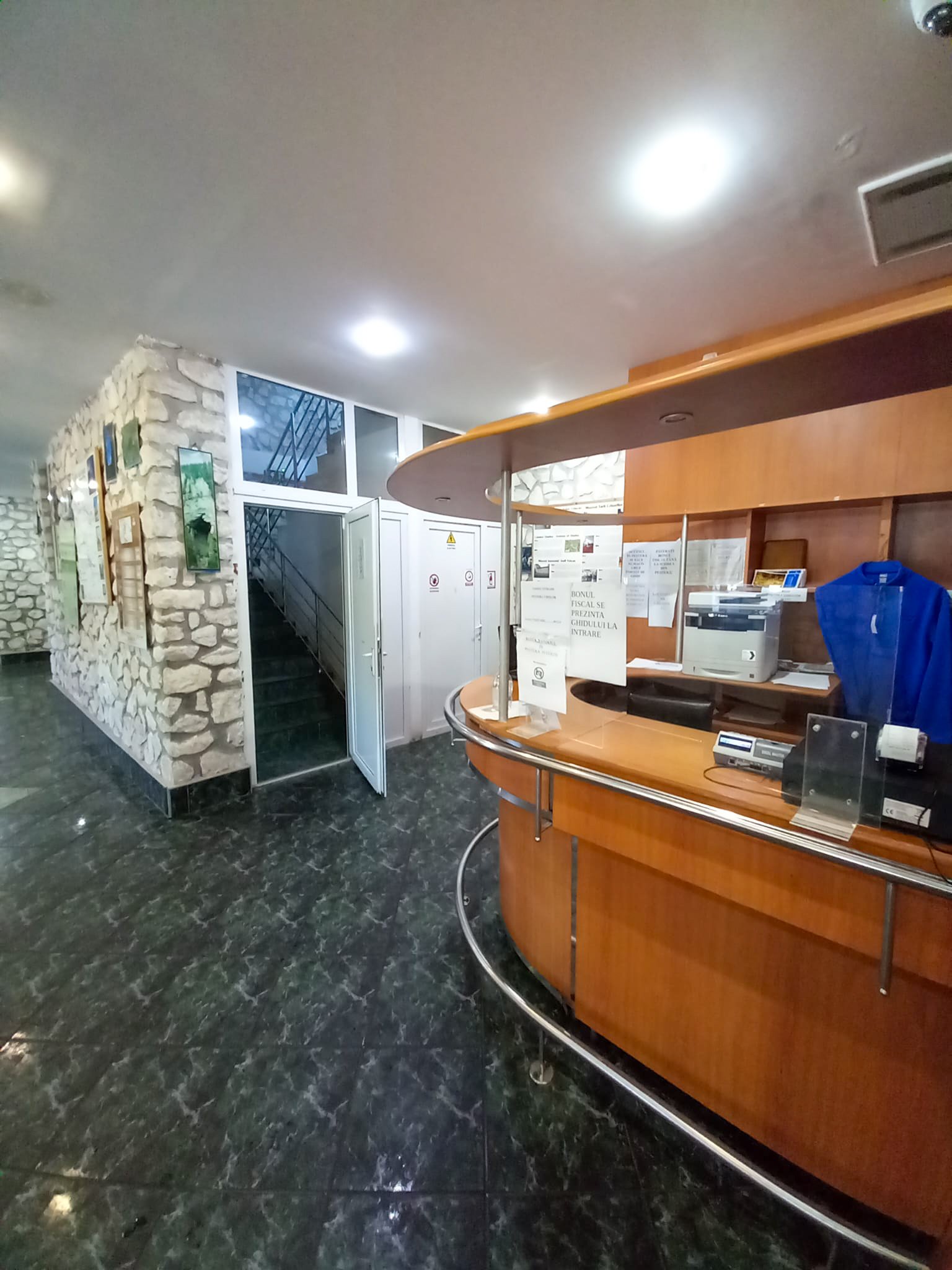
The Bears’ Cave is open from 9 am to 6 pm every day from June to August and from 10 am to 5 pm during the other months of the year. The last admission is one hour before closing.
The entry fee is 40 lei (the Romanian currency). That’s the equivalent of 8 euros or 9 United States dollars.
They do not offer discounts to children or students, so keep that in mind when budgeting for your trip.
They only offer discounts for school trips for over 20 people. For every ten students visiting the cave, a teacher gets a free ticket.
Rules For Visiting The Bears’ Cave
There are a few rules you need to be aware of when visiting Bears’ Cave.
Admission is only possible in groups of a minimum of 3 people and with a tour guide. You do not have to pay extra for the guide; it’s included in the price of the ticket. I think it’s great that everyone visits accompanied by a guide because you’ll learn a lot about the cave and its history.
The guides’ default language for the tour is Romanian, but if there are visitors from other countries who don’t understand Romanian, they can speak in English. You have to give them a heads-up when you buy the tickets.
The visit starts every hour on the hour and lasts about 45 minutes. You can’t touch anything inside the cave to ensure the limestone formations are preserved for a long time.
They do not allow people to take pictures inside the cave. However, in my experience, this rule is lax. It honestly depends on the guide. Some will allow you to snap a picture, while others enforce this rule.
History Of Its Discovery
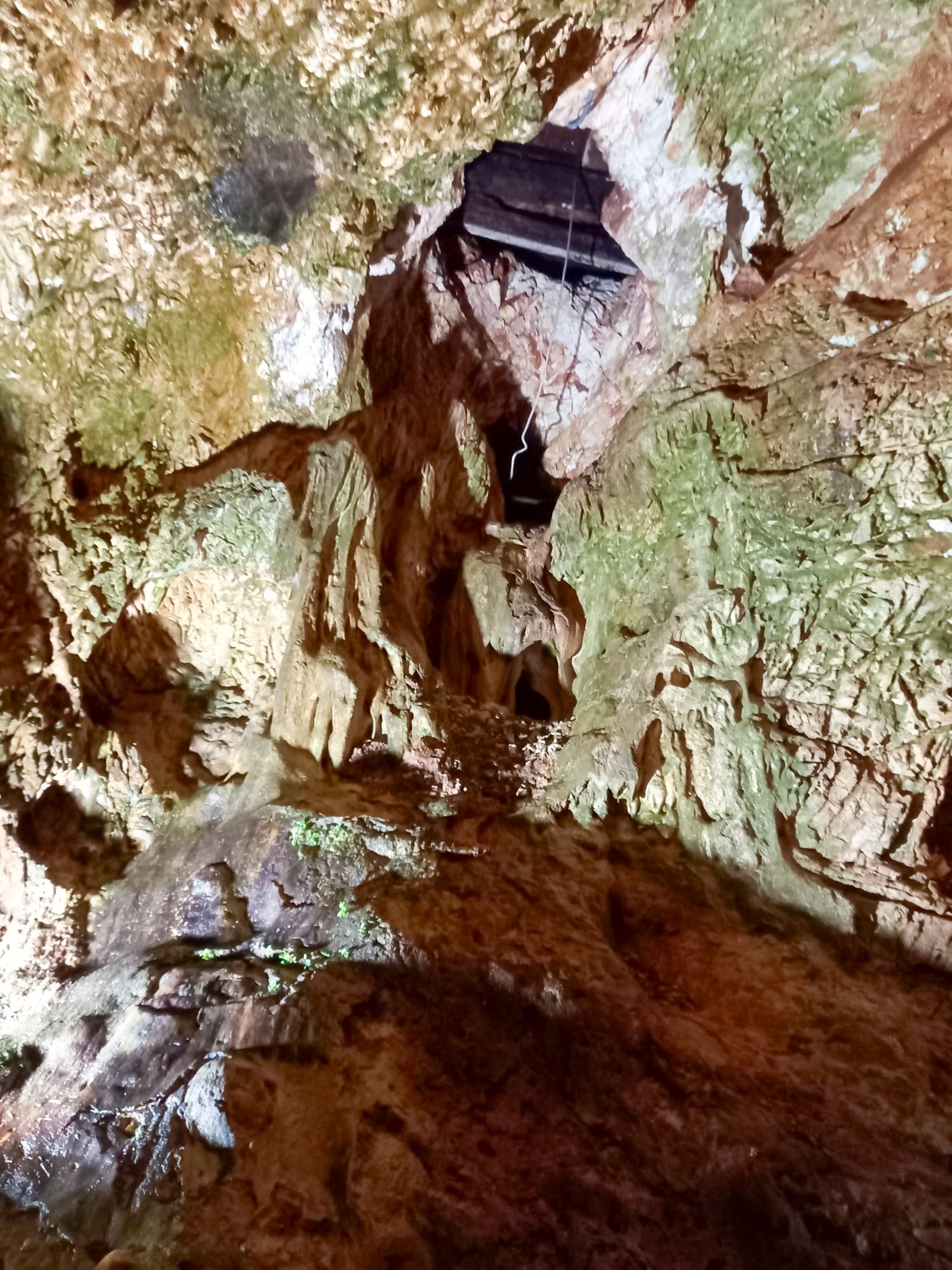
Bears’ Cave was discovered by accident on September 17, 1975. During a controlled explosion at the marble quarry in Chișcău, the workers noticed a hole of about 30cm, which turned out to be the entrance to a spectacular cave.
The first man who entered the cave was Traian Curta, one of the miners. There is a plaque at the entrance to the cave with his picture, crediting him as the person who discovered the cave. He is still alive today; he is 84 years old, and the discovery of Bears’ Cave is the highlight of his life and career.
The crack that was created during the explosion that led to the discovery of the cave is on display, as well as part of the rope that was used by Traian Curta to go down to the cave for the first time. You can see both in the picture above.
Traian was curious about what he would find down there. He went down through that hole with just a hammer and a lantern. He said that once he got down and started walking around, he tripped on a large skull, and he didn’t know which species it belonged to.
Soon after the discovery of the cave, the speleologist teams from Ștei and Cluj Napoca came on site and discovered that the skull belonged to Ursus spelaeus (cave bear), an extinct species.
It turns out that about 15,000 years ago, there was a strong earthquake that completely isolated the Bears’ Cave from the rest of the world, trapping over 140 bears from the Ursus spelaeus species inside. These bears became extinct during the last Glacial Maximum, a period of significant climatic change and habitat loss that greatly impacted many species, including the cave bear.
The Bears’ Cave opened its doors to the public on July 14, 1980.
Visting 3 Galleries Inside The The Bears’ Cave
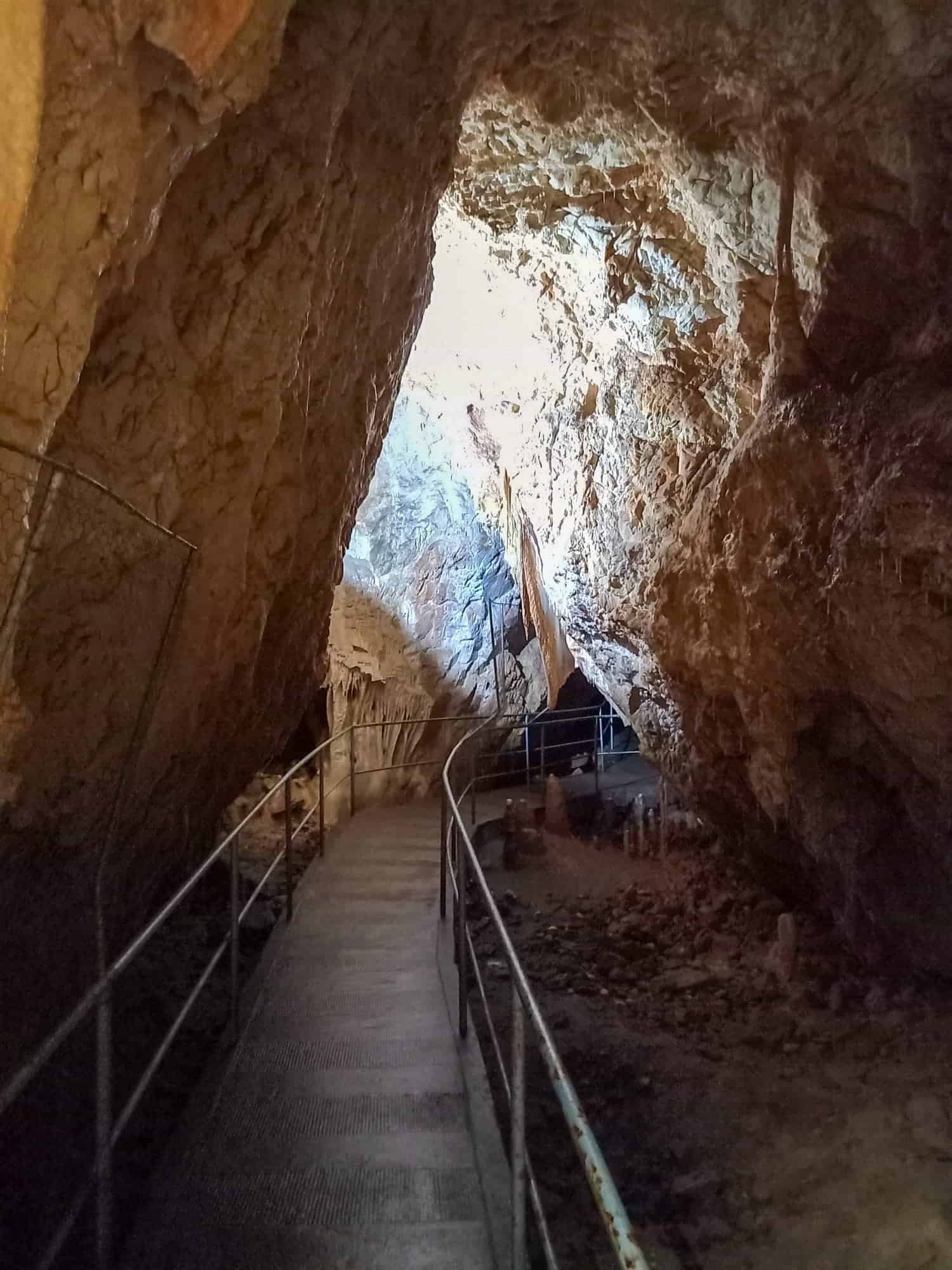
The Bears’ Cave is more than 1,500 meters long. It is comprised of multiple galleries on two levels. The top level (about 488 meters long) is open to the public and has three galleries: the Bones Gallery, the Emil Racoviță Gallery, and the Candles Gallery.
The bottom level is about 521 meters long and is entirely dedicated to scientific research.
Bones Gallery

The Bones Gallery is the first gallery open to visitors. It has an impressive collection of bones of Ursus spelaeus (cave bear), including an entire skeleton of a bear. You can see it in the picture above.
On the walls of the Bones Gallery, you can notice scratches left by the paws of the bears that inhabited the cave. Besides the skeletons of extinct cave bears, you can also see fossils of other animals that disappeared thousands of years ago, such as the cave lion or cave hyena.
The other interesting thing you can find in the Bones Gallery is a rock formation that resembles the bottom half of a bear, including its legs and tail. The legend says that this is a bear that got trapped inside the cave since you can’t see its head or front legs.
Besides the perfect resemblance with a bear’s lower half, the color of this rock formation is brown. Is it a myth, or is it the truth? Judge it for yourself in the picture below.
This gallery is my favorite one because it’s so rich in history, and it’s what makes the Bears’ Cave distinctive from all other caves out there.
Emil Racoviță Gallery
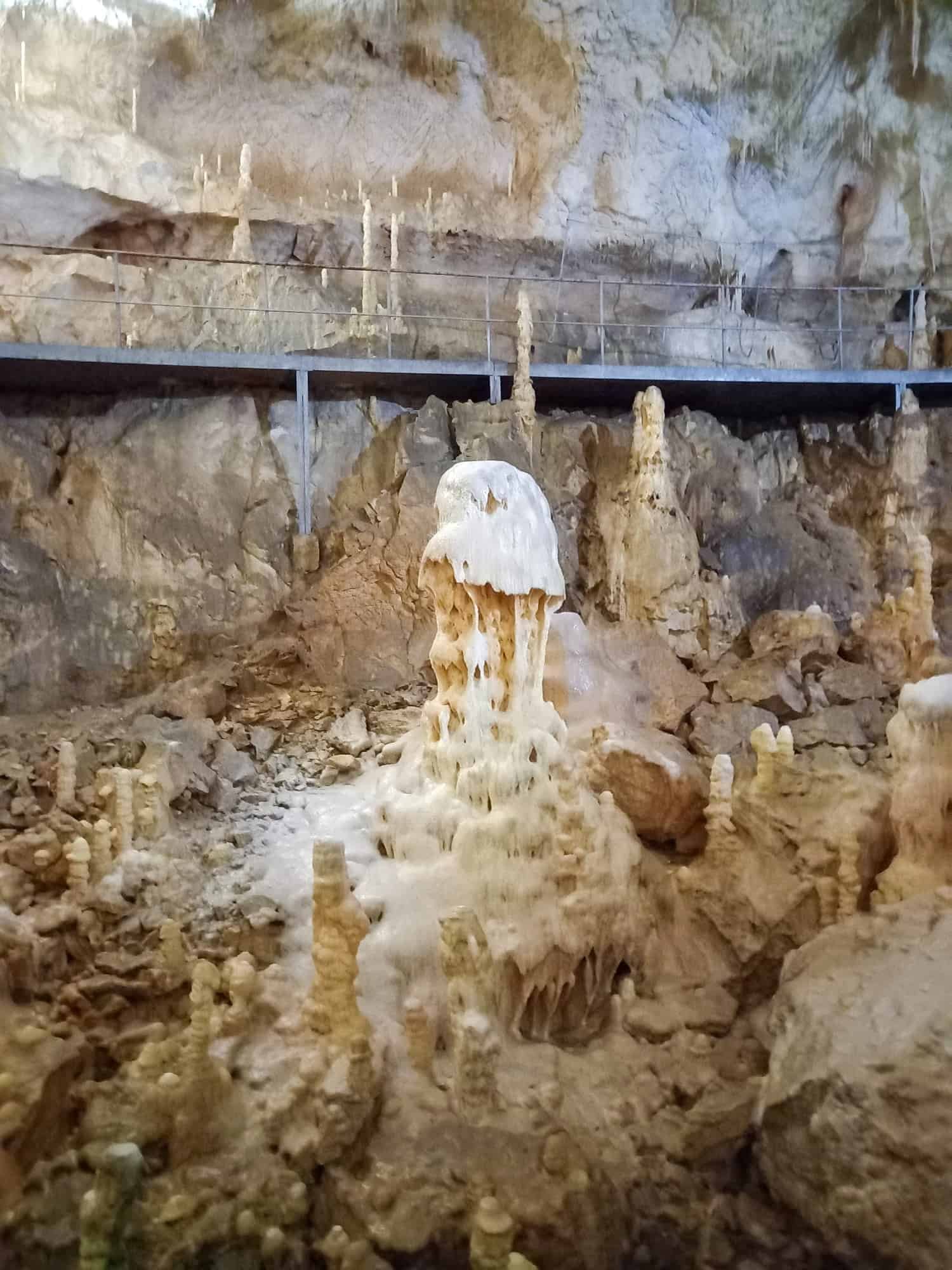
The second gallery is called Emil Racoviță, after the famous Romanian speleologist. Emil was the first Romanian to go on a scientific expedition in the Antarctic. After his voyage, he focused more on speleology, and he explored over 1,400 caves in 5 countries. He and René Jeannel are the founders of biospeleology.
This is the largest gallery out of the three in Bears’ Cave. It has spectacular limestone formations that resemble wax statues. They all have unique shapes. Some of the ones that stand out are the Enchanted Palace, the Water Lily Lake, the Mastodon and the House of the Dwarves, the Portal, the Pagodas, and the Council of Elders.
However, they are all open to interpretation, so if you think they look like something else, that’s totally fine. Even nature’s art is up for interpretation. That’s the beauty of art: everyone looks at the same thing and sees totally different things.
Candles Gallery
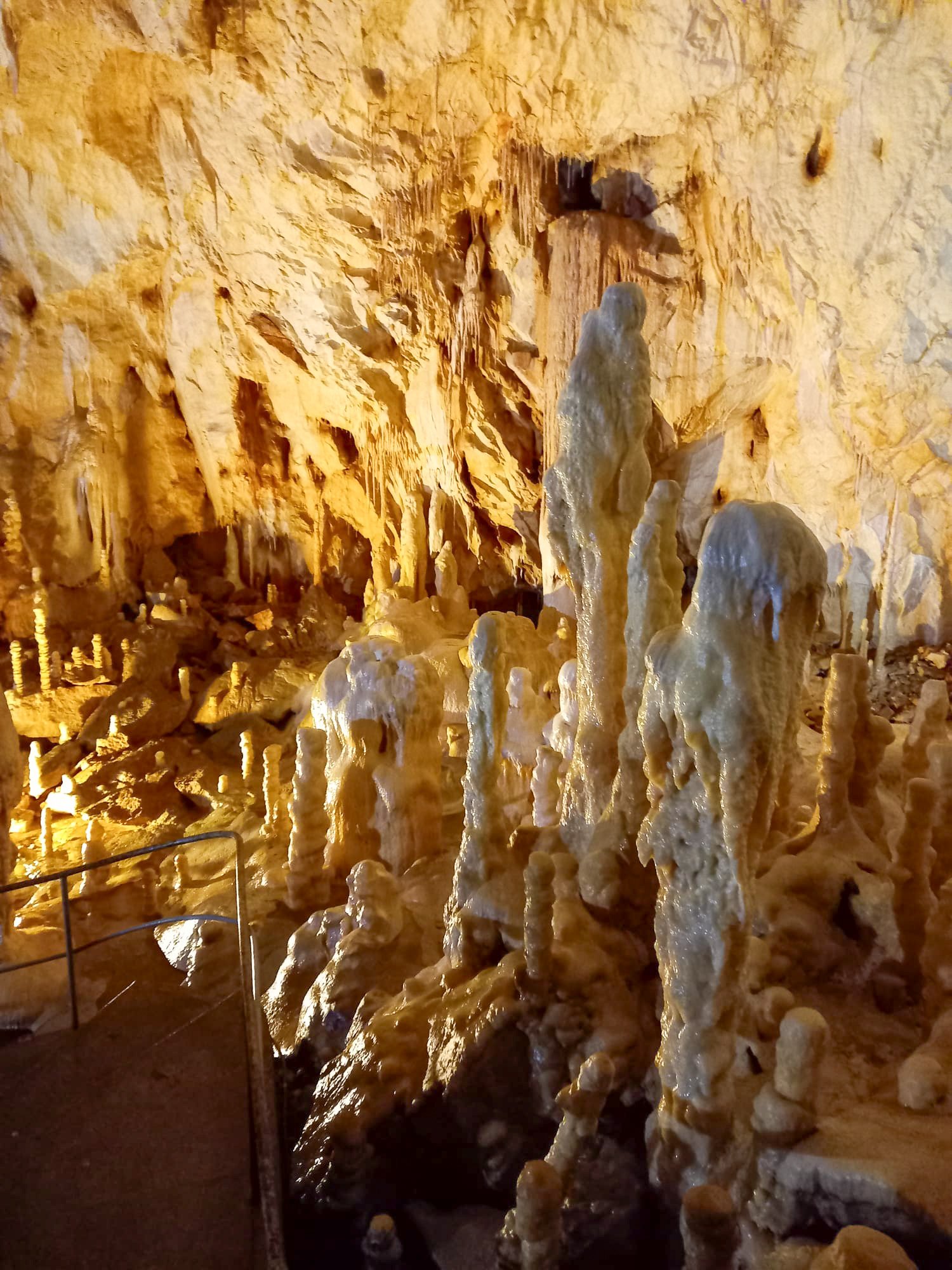
Next is the Candles Gallery. It was named this way because the stalactites and stalagmites resemble long candles. You might be a bit confused as to why Romanians named it the Candles Gallery since they might not look like the tiny round candles you’re used to.
That’s because the most common religion in Romania is Greek-Orthodox, and, in this religion, the candles you use at church are thin and long. Moreover, the candles Romanians use during wedding ceremonies are also very long (about 1 meter long). So, now that you have this context, you might agree that the limestone formations in this gallery indeed resemble the Romanian definition of candles.
Move This Adventure To Your Inbox & Get An Instant Freebie

No spam. Unsubscribe at any time.
Final Thoughts
The Bears’ Cave is one of the most beautiful and impressive caves in Romania and the world. Besides offering beautiful limestone formations, it also offers so much history, highlighted in the three galleries.
You are literally a few feet away from skeletons of extinct bears and other fossils. That’s why I think it deserves a spot on your Romanian itinerary.
The temperature in the cave is 10 °C during all seasons, and the humidity is maintained at 97%. So, make sure to pack a light jacket if you visit in the summer, and don’t wear your warmest coat if you visit in the winter.
During the warmer months, there are a lot of stalls outside of the cave by the parking lot where you can buy souvenirs to remember your trip or share with friends and family.
I hope you liked learning about the Bears’ Cave. If you’re visiting Romania soon, that means you’re ahead of the curve, and you’ll be able to enjoy Romania before millions of tourists flood it. Happy travels, and have the best time in Romania!
FAQs About Bears’ Cave
What is Bears’ Cave?
Bears’ Cave is a unique cave in northwest Romania that has over 140 bear skeletons from the extinct Ursus spelaeus species besides the traditional limestone formations of a cave.
Where is it located?
Bears’ Cave is located in Chişcău village in northwest Romania, at an altitude of 482m. The closest city is Oradea.
How can I get there?
The easiest way to get to the Bears’ Cave is by car. There’s a large parking lot at the Bears’ Cave. I highly recommend you rent a car if you visit Romania.
What are the opening hours?
The Bears’ Cave is open from 9 am to 6 pm every day from June to August and from 10 am to 5 pm during the other months of the year. The last admission is one hour before closing.
How much is the entrance fee?
The entry fee is 40 lei (the Romanian currency). That’s the equivalent of 8 euros or 9 United States dollars.
Do they speak English?
Yes, they do. The guides’ default language for the tour is Romanian, but if there are visitors from other countries who don’t understand Romanian, they can speak in English. You have to give them a heads-up when you buy the tickets.
How long should I plan on being there?
The visit starts every hour on the hour and lasts about 45 minutes.
How cold is inside the cave?
The temperature in the cave is 10 °C during all seasons, and the humidity is maintained at 97%.

